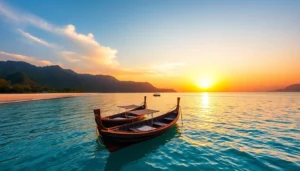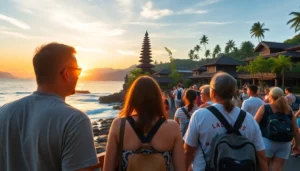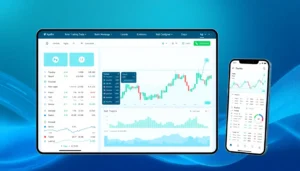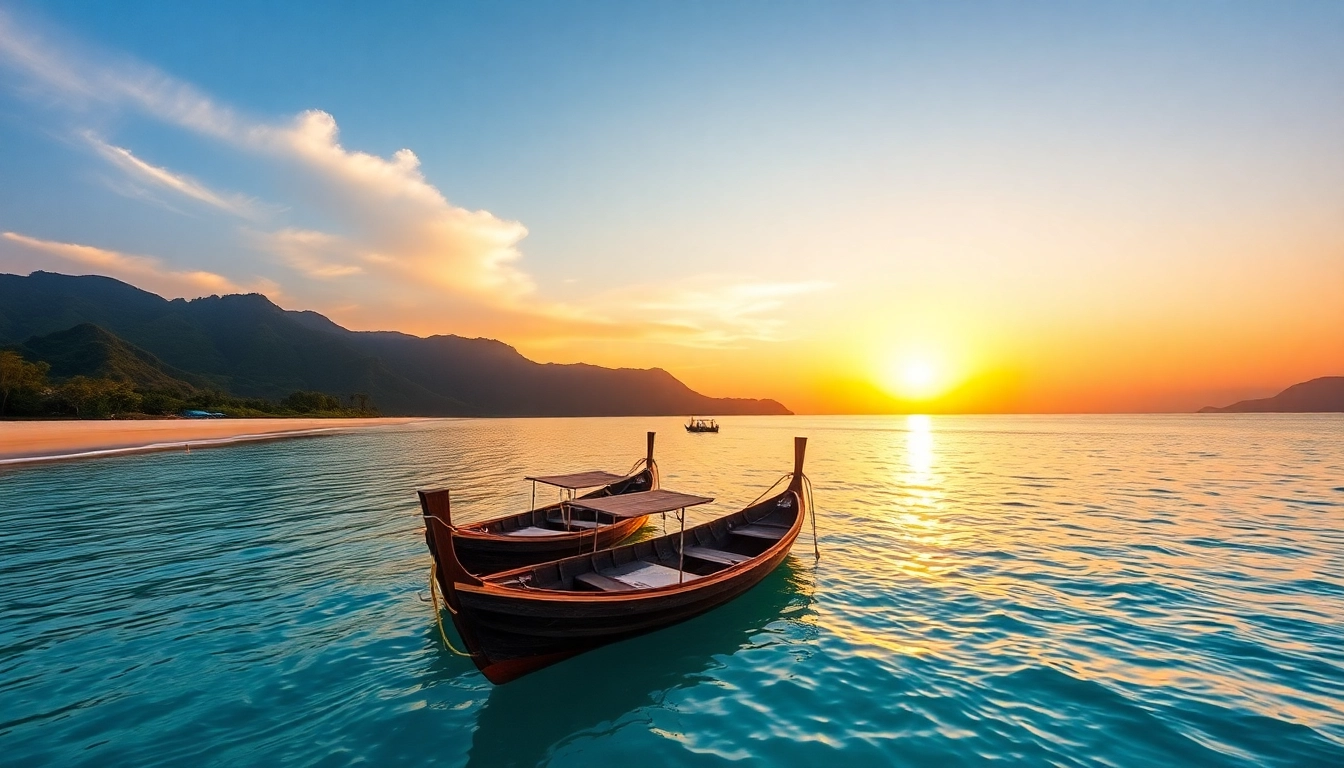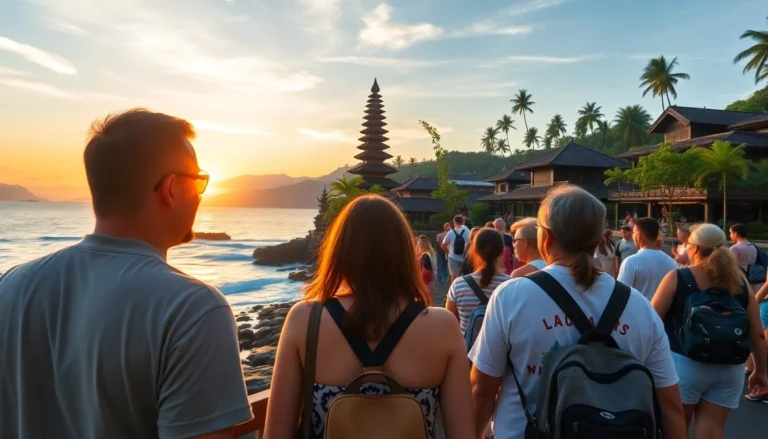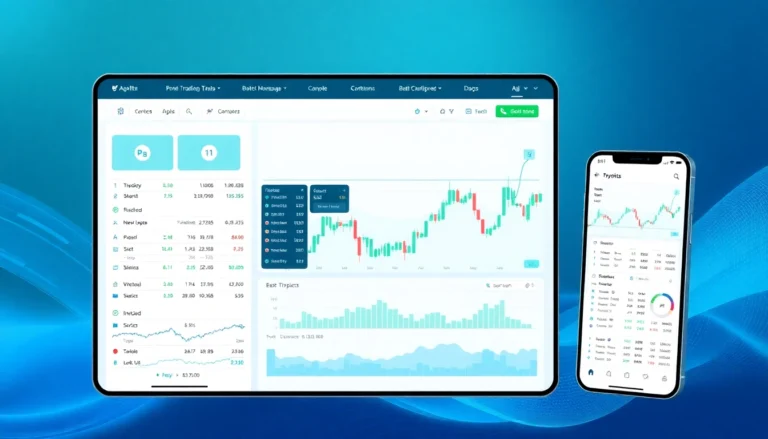Introduction to Lombok: Indonesia’s Hidden Gem
Nestled in the vibrant archipelago of Indonesia, Lombok is a captivating island that often remains in the shadow of its more famous neighbor, Bali. Yet, this island boasts a rich tapestry of natural beauty, cultural heritage, and adventurous pursuits that make it a must-visit destination for explorers seeking authentic experiences away from crowds. From pristine beaches and towering volcanoes to vibrant traditional villages, Lombok offers a diverse spectrum of attractions that entranced travelers and seasoned adventurers alike. As an emerging hotspot for eco-tourism, adventure, and cultural immersion, Lombok is redefining what it means to explore Indonesia’s unspoiled islands. For those curious to unfold its myriad treasures, understanding the island’s geographical, cultural, and ecological facets is essential to appreciating its unique appeal.
Geographical Overview of Lombok Island
Lombok is a substantial island within the Lesser Sunda chain, situated east of Bali and separated by the Lombok Strait, which serves as a natural maritime boundary. Covering approximately 4,514 square kilometers, Lombok is characterized by a rugged landscape dominated by volcanic formations and fertile valleys. Its etymology traces back to local languages, reflecting the rich indigenous Sasak culture that thrives on the island.
The island’s topography is diverse: the central part hosts Gunung Rinjani, Indonesia’s second-highest volcano at 3,726 meters, a prominent feature that influences local climate and ecology. The southern coast features white sandy beaches, turquoise waters, and coral reefs, ideal for marine activities. The northern region comprises lush rainforests and picturesque waterfalls, making it a haven for eco-tourism and biodiversity conservation.
Strategically, Lombok’s location offers convenient access via air and sea, with Lombok International Airport serving the island, connecting it to major Indonesian cities and international hubs. Ports like Bangsal and Lembar facilitate maritime travel, especially for visiting the famed Gili Islands. The island’s geographical layout lends itself to varied activities, from high-altitude trekking and volcano climbing to relaxing beach holidays and scuba diving expeditions.
Understanding the geographical diversity of Lombok is fundamental for travelers and investors seeking to harness its ecological and tourism potential. Its climate, shaped by monsoonal winds, presents the ideal seasons from May to October for outdoor activities, with the wet season from November to April providing lush landscapes and vibrant ecosystems.
Historical Background and Cultural Influences
Lombok’s history is as textured and layered as the island’s landscape. Historically inhabited by the Sasak people, the island’s native culture has preserved a distinctive identity through language, dress, and rituals. Evidence of prehistoric settlements and early trade routes indicates Lombok’s integral role in regional commerce among ancient ASEAN civilizations and later Indian and Chinese traders.
The arrival of Hindu-Buddhist influences in neighboring Bali and Java profoundly impacted Lombok’s cultural trajectory, evident in traditional crafts, dance, and spiritual practices. However, Islam became predominant in the 16th century, shaping the island’s religious landscape and cultural practices. Today, the Sasak culture embodies a syncretic blend of indigenous, Islamic, and external influences, reflected in their weaving, pottery, and music.
Colonial encounters, primarily with the Dutch during the 19th and early 20th centuries, introduced new administrative and architectural elements, remnants of which can still be observed in towns like Mataram. Post-independence, Lombok has focused on preserving its cultural integrity while integrating modern economic opportunities, especially through tourism and agriculture.
The imprint of history and culture is vividly felt in traditional villages such as Sade and Rambitan, where visitors can observe and participate in daily life, traditional ceremonies, and craftsmanship. Cultural festivals, notably the Bau Nyale sea festival, celebrate local mythology, sea harvests, and community bonds, offering tourists an immersive experience rooted in Lombok’s unique heritage.
Why Lombok Stands Out Among Indonesian Destinations
Lombok’s distinguishing features extend beyond its scenic landscapes. It offers a quieter, more authentic alternative to Bali, appealing to travelers seeking natural wonders and cultural depth without the overwhelming tourism crowds. The island’s commitment to sustainable tourism practices and eco-conscious initiatives enhances its appeal to conscious travelers.
Its diverse ecosystem supports a variety of habitats, from volcanic terrains and coral reefs to rainforests, fostering rich biodiversity that attracts eco-adventurers. Moreover, Lombok’s local communities actively preserve traditions and promote eco-friendly tourism, providing an authentic experience that integrates local life with modern exploration.
Unlike some Indonesian islands heavily reliant on mass tourism, Lombok emphasizes quality over quantity, with boutique resorts, homestays, and eco-lodges that promote local economies. The island’s strategic development focus includes promoting cultural heritage sites, adventure tourism, and community-led initiatives, ensuring sustainable growth and cultural integrity.
In addition, Lombok’s geographic proximity to Bali makes it an excellent extension for travelers already exploring Indonesia’s popular hotspot, yet it remains distinctly unique with lesser congestion, authentic customs, and untouched landscapes—making it a truly compelling destination for diverse traveler profiles.
Top Natural Attractions in Lombok
Iconic Beaches and Coastlines
Lombok’s beaches are renowned for their pristine white sands, warm waters, and vibrant marine life. Kuta Beach on the southern coast offers excellent surf conditions, attracting surfers from around the world. Tanjung Aan and Selong Belanak beaches are celebrated for their turquoise waters, perfect for swimming, sunbathing, and family outings.
The Gili Islands—Gili Trawangan, Gili Air, and Gili Meno—are world-famous for snorkeling and diving, boasting colorful coral reefs and abundant marine species. These islands have become a haven for underwater explorers, with some of the best macro and reef diving spots in Indonesia.
Gunung Rinjani: Indonesia’s Second-Highest Volcano
Standing majestically at 3,726 meters, Gunung Rinjani is the centerpiece of Lombok’s natural landscape. It’s a magnet for trekkers and mountaineers, offering challenging trails and breathtaking panoramas from its summit. The Rinjani Caldera Lake, Segara Anak, adds to the volcano’s allure with its emerald waters and stunning setting.
Climbing Rinjani requires planning, endurance, and proper gear, but it rewards adventurers with awe-inspiring vistas, geothermal springs, and the opportunity to witness volcanic activity up close. Many guided tours provide comprehensive packages, including acclimatization, camping, and safety provisions.
Hidden Waterfalls and Lush Rainforests
Lombok’s interior is dotted with secret waterfalls, such as Sendang Gile and Tiu Kelep, nestled within verdant rainforests. These waterfalls are accessible through well-trodden trekking paths, offering refreshing dips and photographic opportunities surrounded by biodiversity.
The island’s rainforests provide habitat for endemic flora and fauna, making Lombok a biodiversity hotspot. Conservation initiatives aim to preserve these ecosystems while offering eco-tours and educational experiences for visitors.
Cultural and Traditional Experiences in Lombok
Authentic Sasak Villages and Local Crafts
To truly understand Lombok’s cultural heritage, visiting traditional Sasak villages such as Sade and Rambitan is essential. These villages showcase authentic Sasak architecture, weaving practices, and daily routines of local artisans. Visitors can participate in weaving, learn about traditional pottery, and observe age-old customs that have been passed down through generations.
Local markets in these villages offer handcrafted textiles, silver jewelry, and souvenirs, providing economic support to artisan communities. The experience not only deepens cultural appreciation but also promotes sustainable tourism and preservation of indigenous crafts.
Main Festivals and Cultural Events
The Bau Nyale Festival is Lombok’s most celebrated cultural event, held annually in coastal areas like Kuta and Senggigi. Inspired by local legend, it involves the mass sea worm hunt, traditional dances, and religious rituals. The festival symbolizes community ties, fertility, and prosperity.
Other festivals, such as the Lombok International Cross Culture Festival, showcase traditional music, dance, and art, fostering intercultural exchange and cultural pride among locals and visitors alike.
Traditional Food and Culinary Delights
Lombok’s cuisine reflects its cultural diversity, with dishes like Ayam Taliwang (spicy grilled chicken), Plecing Kangkung (water spinach salad with chili), and fresh seafood. Local markets serve a spectrum of flavors from fiery sambals to sweet coconut treats.
Participating in cooking classes or street food tours offers authentic culinary insights and supports local food producers. The island’s unique flavors and dishes are integral to its cultural identity and tourism appeal.
Adventure and Outdoor Activities on Lombok
Surfing Hotspots and Water Sports
World-class surf breaks await enthusiasts at spots like Desert Point, one of the most famed waves globally, and the beaches of Kuta and Gerupuk. Surf lessons are widely available for beginners, while seasoned surfers can challenge themselves on the more advanced breaks.
Beyond surfing, water sports such as stand-up paddleboarding, kite surfing, and jet skiing are popular along the coastlines. Marine exploration through snorkeling and scuba diving reveals vibrant coral reefs and diverse marine ecosystems, making Lombok an ideal playground for water lovers.
Hiking, Trekking, and Mountaineering
In addition to Rinjani, several trails offer rewarding trekking experiences. The Pandanan Beach Trek is a scenic coastal hike, while the Bukit Merese hill provides panoramic views of the southern coast. Guided treks enable visitors to explore forested areas, caves, and traditional villages, integrating outdoor activity with cultural immersion.
Marine Exploration: Snorkeling and Diving Spots
Reefs off Gili Islands and around Sekotong are internationally recognized for healthy coral and abundant marine life, including turtles, reef sharks, and colorful fish. Dive centers offer certified courses and excursions suitable for all levels, promoting marine conservation awareness among tourists.
Planning Your Visit: Tips and Insights
Best Times to Visit Lombok for Weather and Events
The optimal period to visit Lombok for dry weather and favorable sea conditions is from May to October, coinciding with the dry season and minimal rainfall. This season aligns with major festivals and cultural events, providing richer experiences.
The wet season from November to April sees heavy rains, but also lush landscapes and fewer tourists, making it a good option for eco-minded travelers and those seeking solitude, provided they are prepared for weather variability.
Accommodations and Local Transportation Options
Lombok offers a range of accommodations, from luxury resorts and boutique hotels to budget homestays and hostels. Popular areas include Senggigi, Kuta, and the Gili Islands, each offering different atmospheres tailored to diverse preferences.
Transportation options include rental scooters, private drivers, and shuttle services. For longer distances, local buses and ferries connect major points, while facilitated tours provide hassle-free exploration of remote sites.
Responsible Tourism and Cultural Respect Guidelines
Visitors should aim to minimize environmental impacts by following sustainable practices, such as avoiding single-use plastics, respecting local wildlife, and supporting eco-friendly accommodations. Respect for local customs, dress codes, and cultural sensitivities—especially during religious ceremonies—is crucial for fostering positive interactions.
Engaging with community-led tourism initiatives ensures that economic benefits distribute equitably and cultural integrity remains preserved. Support local artisans, participate in ethical tours, and leave positive footprints to ensure Lombok remains a pristine and culturally vibrant destination for generations to come.
